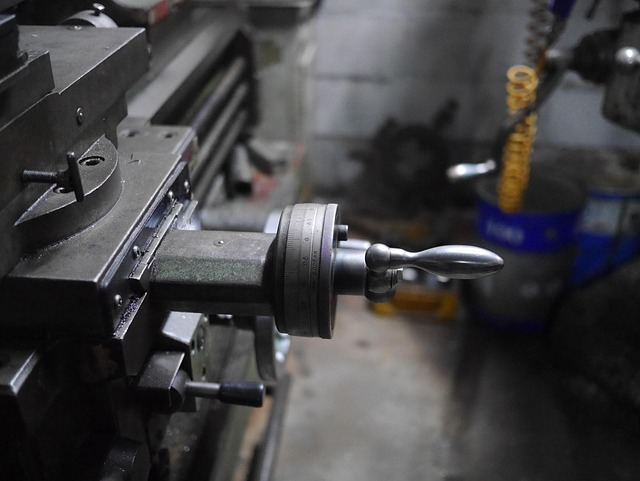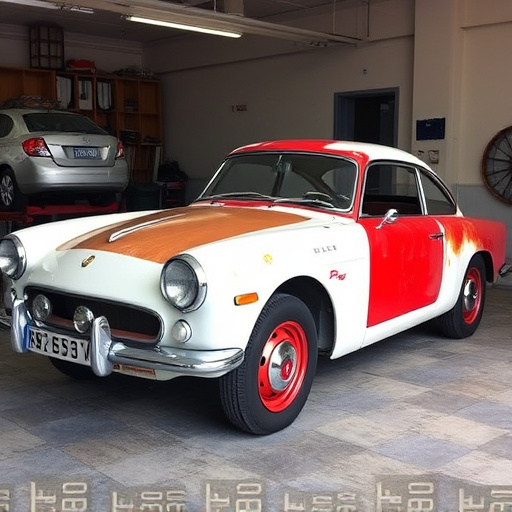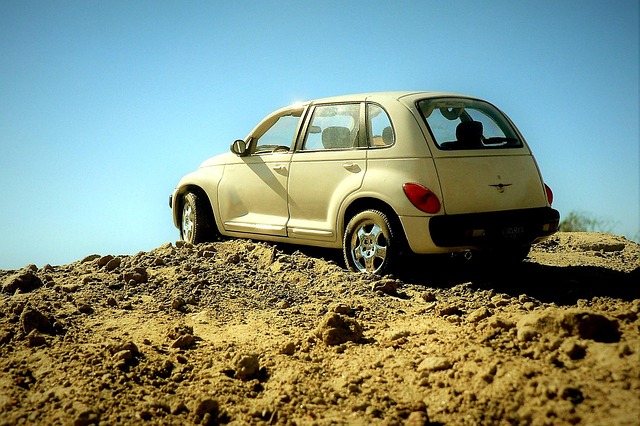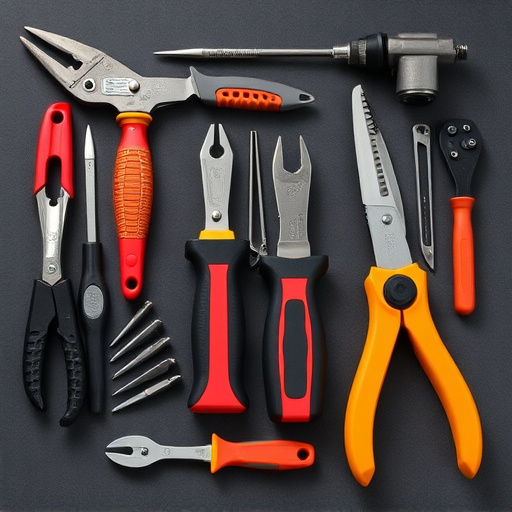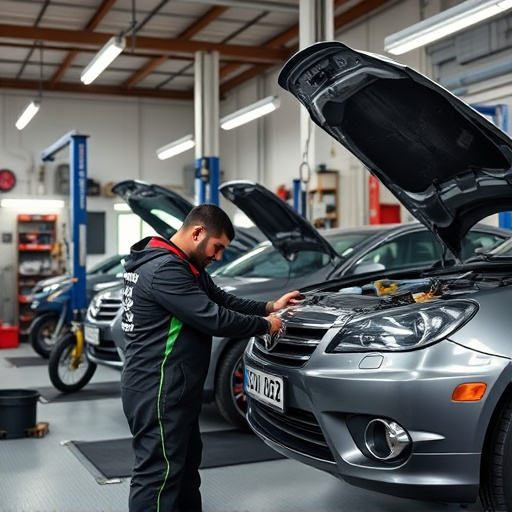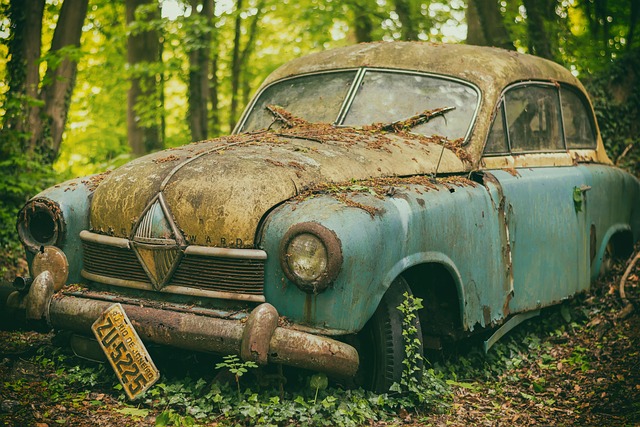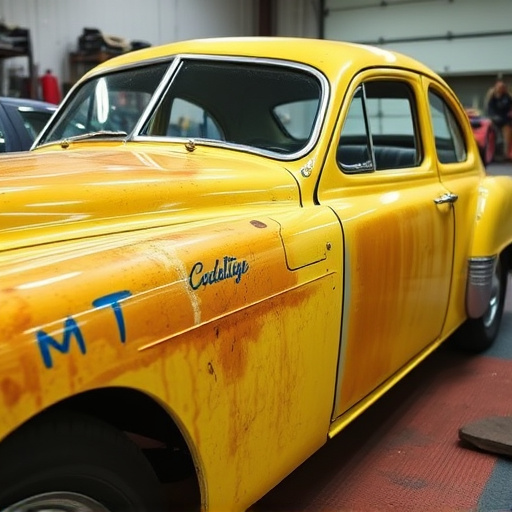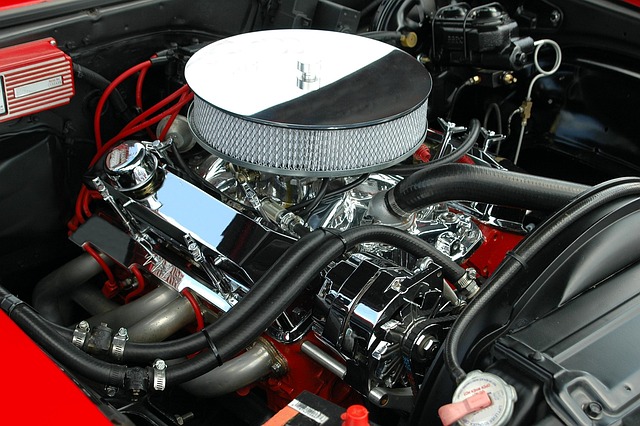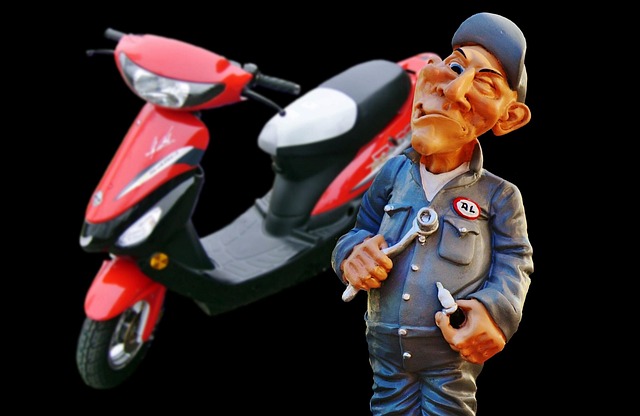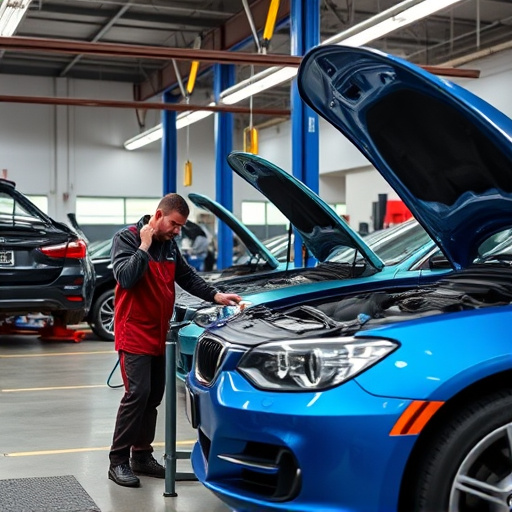Automotive refinishing prioritizes safety through stringent guidelines, employee training, protective gear like respirators and goggles, proper ventilation, lighting, and workspace organization to minimize hazards. Adherence to these measures ensures secure environments for collision repair and vehicle restoration while delivering exceptional bodywork services.
In the world of automotive refinishing, safety is paramount. This intricate process demands meticulous attention to detail and adherence to stringent protocols to ensure both the quality of the finish and the well-being of workers. From understanding critical safety protocols to equipping refinishers with essential protective gear, creating a safe workspace environment in an autoshop is crucial for successful and hazard-free operations. Let’s explore these key aspects to demystify the safety measures behind automotive refinishing.
- Understanding Safety Protocols for Automotive Refinishing
- Protective Gear: Essential Tools for Refinishers
- Creating a Safe Workspace Environment in Autoshop
Understanding Safety Protocols for Automotive Refinishing
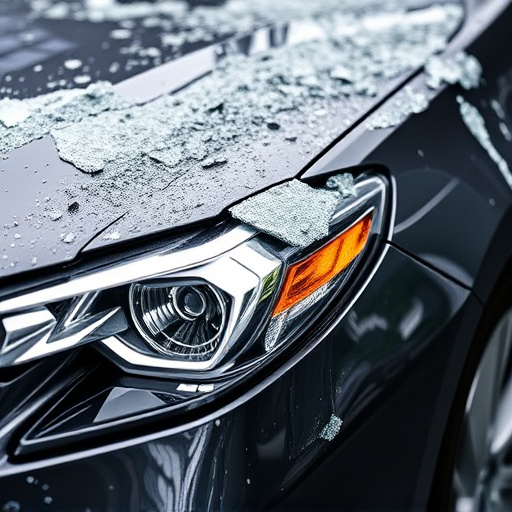
Safety protocols are paramount in automotive refinishing, a process that involves intricate work on a car’s exterior. Shops must adhere to strict guidelines to ensure the well-being of employees and customers alike. This includes proper ventilation to mitigate the risk of inhaling toxic fumes from paint and solvents, as well as the use of personal protective equipment (PPE) such as respirators, gloves, and safety goggles.
Training is another critical aspect; technicians must be skilled in handling hazardous materials and equipped with knowledge about safety procedures, including emergency response protocols. By implementing these measures, automotive refinishing shops can provide a safe environment for car paint repair and collision repair services, ultimately delivering high-quality car bodywork services.
Protective Gear: Essential Tools for Refinishers
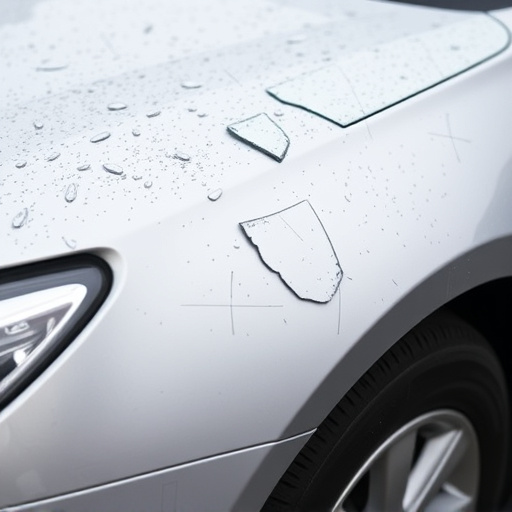
In the realm of automotive refinishing, where precision meets artistry, protective gear stands as an indispensable tool for refinishers. These professionals, tasked with transforming damaged vehicles into pristine masterpieces, rely on specialized equipment to safeguard against hazardous substances and debris. From respirators that filter harmful fumes to impact-resistant goggles that shield eyes from flying particles, each piece of protective gear plays a pivotal role in ensuring the well-being of the refinisher.
The importance of these safety measures cannot be overstated, especially when dealing with auto repair services or car body repair, which often involve exposure to toxic chemicals and potential injury hazards. In light of this, refinishers must prioritize their health and safety by donning the right gear, thereby enhancing efficiency and ensuring a seamless transformation in hail damage repair processes.
Creating a Safe Workspace Environment in Autoshop
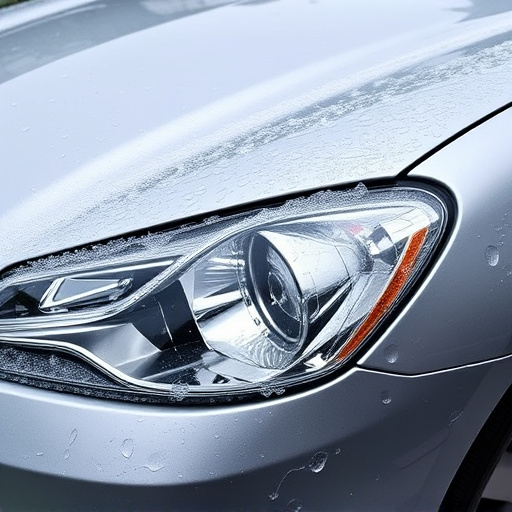
In any automotive refinishing workshop, creating a safe workspace environment is paramount. This involves ensuring the area is well-ventilated to minimize the inhalation of harmful fumes from paints and solvents. Proper lighting should be in place to avoid eye strain and facilitate accurate work, especially during intricate vehicle restoration processes. The floor must be clean and free from slip hazards, with designated areas for different tasks to maintain order and reduce clutter. Safety signs and labels should be strategically placed to warn against hazardous materials and procedures, ensuring that both employees and customers are aware of potential risks.
Furthermore, the collision repair shop should adhere to strict safety protocols, including regular maintenance of tools and equipment to prevent malfunctions. Employees must receive adequate training in the safe handling of chemicals and heavy machinery commonly used in automotive refinishing. Personal protective equipment (PPE), such as gloves, goggles, and respirators, should be provided and mandatory for all staff engaged in vehicle repair services or vehicle restoration tasks. Regular safety inspections are crucial to identify and rectify any potential hazards, fostering a culture of safety that is essential for both productivity and the well-being of the workforce.
Shops prioritizing safety during automotive refinishing is paramount to protect workers and ensure high-quality results. By adhering to strict protocols, providing appropriate protective gear, and maintaining a secure workspace environment, autoshops can create a harmonious balance between meticulous craftsmanship and employee well-being. These measures not only safeguard against hazards but also contribute to the overall success and reputation of the shop in the competitive automotive industry.

